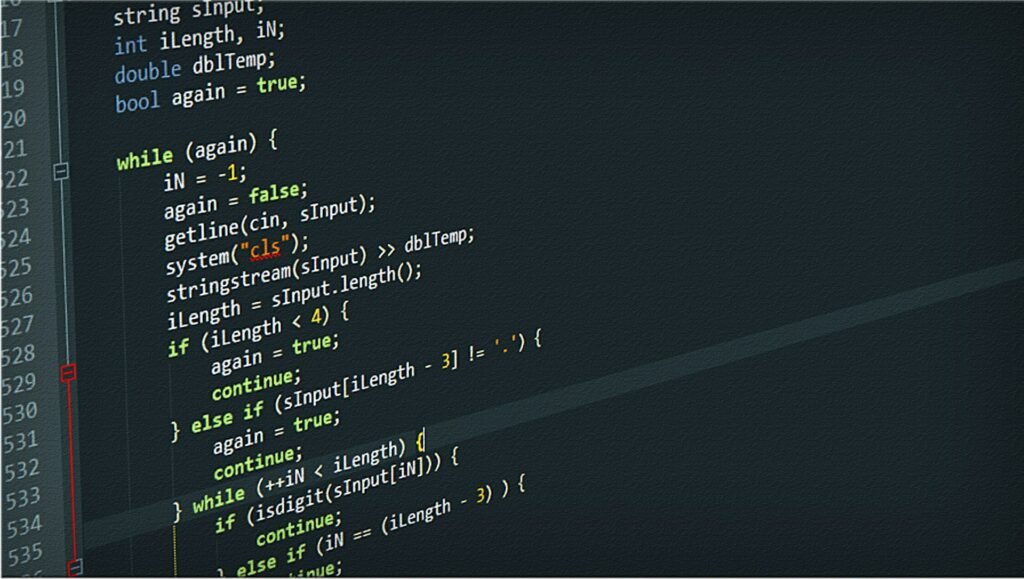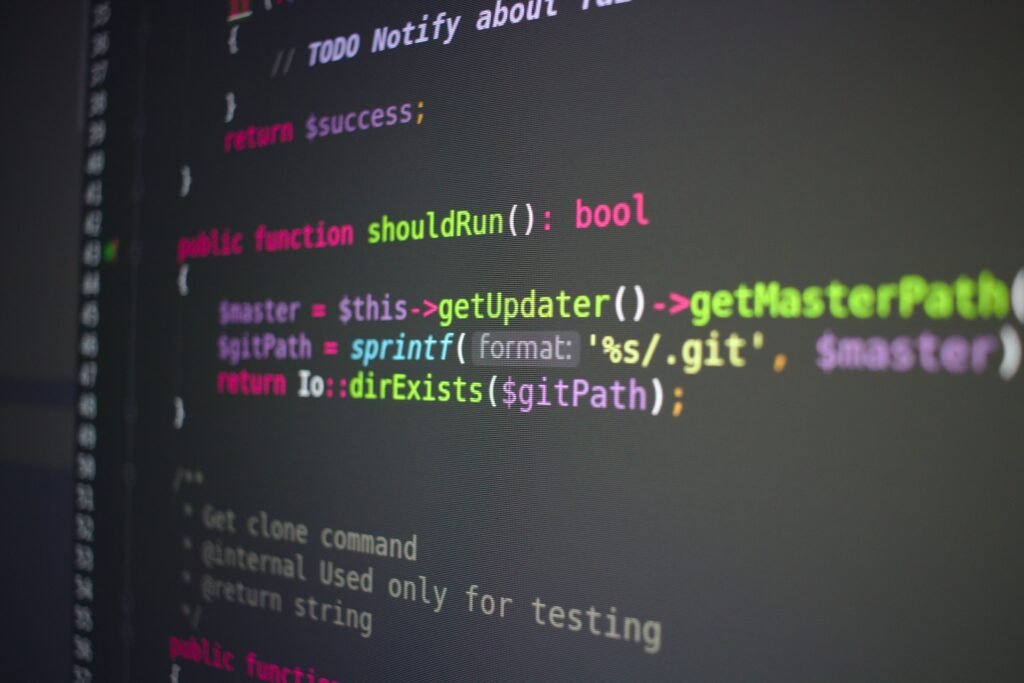React
React is a free javascript package used to create user interfaces. Developers can easily update and render reusable user interface (ui) components when the data changes. React utilizes a virtual dom (document object model) and a component-based design to render pages quickly. It is often used to create multi-page apps, mobile applications, and complicated online interfaces. Declarative syntax provided by react makes code easier for beginners to understand and maintain. It also features a huge and active community, substantial documentation, and a rich ecosystem of third-party libraries and tools.

Advantage and disadvantage of react
React’s advantage.
- Component-based architecture – react encourages a component-based architecture that is modular and reusable, which makes it simpler to create and manage complex applications. The ability to reason about and test distinct portions of an application is facilitated by the way that components encapsulate their own information and logic.
- Virtual dom – to quickly update and render components, react makes use of a virtual dom. React updates a lightweight virtual model of the dom and then makes the bare minimum modifications to the actual dom, bypassing direct manipulation of the browser dom. Better performance and a more seamless user experience are the outcomes of this strategy.
- Declarative syntax – react relies on a declarative syntax that enables developers to specify the ui’s appearance based on the state of the application at any given time. This increases the predictability, readability, and bug resistance of the code.
- Large and active developer community – react has a huge and active developer community, meaning there is a tonne of resources, tutorials, and libraries accessible. The react ecosystem is large and includes tools and frameworks for testing (jest, enzyme), state management (redux, mobx), routing (react router), and other functions.
React disadvantages.
- Steep learning curve – react has a steep learning curve, especially for those who are unfamiliar with javascript frameworks or the ideas of functional programming. It could take some time and effort to fully understand ideas like jsx, components, state management, and the virtual dom.
- Tooling complexity – react is only a view library, thus extra tools and libraries are needed to construct a whole application that includes state management, routing, and other functions. For newcomers in particular, setting up the programming environment and configuring the appropriate build tools might be difficult.
- Rapidly changing ecosystem – new features, frameworks, and best practices are continuously added to the react ecosystem, which is always changing. While this encourages innovation, it may also cause fragmentation and a need for ongoing adaptation to new developments.
- Speed considerations – although react’s virtual dom offers speed improvements, creating complicated user interfaces or managing vast quantities of data can still be difficult from a performance standpoint. Component optimization, minimizing needless re-renders, and putting in place effective data management techniques require careful consideration.
Best characteristics of react
React has a number of exceptional qualities that add to its popularity and efficiency while creating user interfaces.
- Component-based design – with react’s component-based design, developers can separate the user interface into reusable and modular components. This method makes it simpler to create and maintain complicated programs by encouraging code reuse, maintainability, and scalability.
- Virtual dom – react makes use of a virtual dom, a compact version of the real dom of the browser. React minimizes operations on the real dom by comparing and updating just the required changes, leading to better performance and quicker rendering.
- Declarative syntax – developers may specify the appropriate ui state and structure using react’s declarative syntax. Instead of managing low-level activities or directly altering the dom, developers describe how the ui should appear based on the state of the application. The predictability, readability, and maintainability of the code are improved by this method.
- Unidirectional data flow – react uses one-way data binding, sometimes referred to as a unidirectional data flow. Top-down data flow ensures a clear and predictable flow of information by moving information from parent components to child components. Debugging is made easier by this style since data changes are more localized and visible.
- Jsx – react uses javascript xml (jsx), a javascript extension that enables the blending of html-like syntax with javascript code. With jsx, developers can design ui components in a more natural and expressive way while also improving the readability of their code. Additionally, it makes it simple to combine appearance and logic inside the same component.
- React native – react native is a framework built on react that allows for the creation of mobile apps. Developers may use javascript and react to create cross-platform mobile applications using react native, sharing a significant quantity of code between the ios and android platforms. This method offers performance and user experience similar to native while cutting down on development time and effort.
- Active community and ecosystem – react has a large and active developer community that consistently works to advance the framework. Developers may make use of pre-existing solutions thanks to the availability of open-source libraries, tools, and resources, which speeds up development and offers solutions for a wide range of use cases.
React js
Facebook created the open-source react.js javascript library for creating user interfaces. When the underlying data changes, it is generally utilized to effectively update and render reusable user interface components. To improve rendering efficiency, react utilizes a virtual dom (document object model) and a component-based design.
Best key react.js features and concepts.
- Components – react enables programmers to design modular user interface elements. Complex applications may be created and maintained more easily thanks to these components, which can have their own state and logic.
- Virtual dom – react makes use of a virtual dom, a compact version of the real dom of the browser. React effectively updates the virtual dom when the state of a component changes, and then makes the necessary minimum modifications to the real dom, improving efficiency.
- Jsx – jsx is a javascript syntactic extension that enables programmers to construct html-like code inside of javascript. It enables a more natural and declarative definition of the structure and content of react components by developers.
- Unidirectional data flow – react commits to a unidirectional data flow, commonly referred to as one-way data binding. Data flows from parent components to child components, and any data changes cause the impacted components to be re-rendered. This design approach improves predictability and makes debugging easier.
- State and props – state and props are two different forms of data used by react components. Props are sent down from parent components and are immutable within a component, whereas the state is the internal data of a component that can change over time. Building interactive and dynamic uis requires managing state and props.
- React hooks – introduced in react 16.8, hooks are a feature that enables developers to leverage state and other react capabilities in functional components without the usage of class components. Hooks streamline component logic and promote reuse.
- React router – a appreciated library for handling routing in react apps is react router. It has declarative routing features that let developers specify several routes and the components that go with them, facilitating movement inside the application.
React native
Javascript and the react.js library may be used to create native mobile applications using facebook’s open-source react native framework. Developers may construct mobile apps for both the ios and android platforms with react native, sharing a substantial percentage of the code between the two platforms.
These are the key react native features and concepts.
- Cross-platform development – react native gives programmers the ability to build code once and publish it across several platforms. By doing away with the requirement for distinct codebases for ios and android, this method reduces development time and effort. Applications that are high-performance and native-like are produced by using native components and apis that are unique to each platform.
- Native components – native ui components given by the platform, such as buttons, text input fields, and navigation controls, may be used by developers using react native. Native apis are used to render these components, giving users a uniform and smooth experience.
- Hot reloading – react native supports hot reloading, which enables developers to view changes in the app right away without having to rebuild it completely. The development process is greatly accelerated by this feature, which also boosts productivity.
- React.js and jsx – react native makes advantage of the power of react.js and jsx syntax, enabling developers to create mobile apps using renowned react features. With the help of jsx, developers may create declarative ui code that is more understandable and manageable by combining javascript with html-like syntax.
- Access to native apis – react native creates a connection between javascript and each platform’s underlying native apis. Developers may integrate with device features like cameras, geolocation, push notifications, and more by building native modules or utilizing pre-built community libraries, which provide them access to platform-specific apis and capabilities.
- Third-party libraries – the node package manager (npm) makes a significant number of third-party libraries and packages accessible to react native users. These libraries provide extra features, ui elements, and tools that are simple to include in react native projects, reducing the amount of time and effort required for the development.
- Speed – by using native rendering capabilities and streamlining javascript execution, react native achieves great speed. The business logic is handled by a separate javascript thread, and the main thread is used to generate the user interface, making it fluid and responsive.
Bootstrap react
An appreciated css framework known as bootstrap offers a selection of pre-made elements, styles, and tools for creating flexible web apps. Developers may effectively design visually beautiful and interactive user interfaces by combining bootstrap and react with each other.
There are several ways to integrate bootstrap with react.
- React bootstrap – officially implementing bootstrap components in react, react bootstrap. It offers a collection of pre-made react components that follow to bootstrap’s functionality and appearance. You may add react bootstrap to your project’s dependencies and utilize the included components right in your react code.
- Reactstrap – another popular package that combines react and bootstrap components is reactstrap. It provides a selection of react components that encase the javascript and css libraries used by bootstrap. Utilize bootstrap components’ responsive style and interactive functionality in your react application by simply adding them with reactstrap.
- Manually integrating bootstrap – you may manually integrate bootstrap into your react project if you’d need greater control over the integration or need to change a few things. The bootstrap css and javascript files may be added to your project and used in conjunction with your react components. Additionally, you may style your react components using the bootstrap css classes and utility styles.
These general instructions can help you start with react and bootstrap.
- Create a react project by putting up your own unique setup or utilizing a build tool like create react app.
- As dependencies, install either react bootstrap or reactstrap in your project. A package management like npm or yarn may be used for this.
- Use the required bootstrap components that were imported from the selected library in your react components. For information on the various components and how to use them, consult the library’s documentation.
- Use the bootstrap-provided css classes to apply bootstrap styling to your components. Either explicitly include the bootstrap css file in your project, or import certain styles into the css files for your component.
React create app
A command-line utility called “create-react-app” enables you to rapidly build a new react.js project with a pre-configured development environment. It comes pre-configured with a scaffolded structure, a development server, and build scripts, and is the official react recommended method for beginning a new react project.
Use “create-react-app” to build a new react project by following these instructions.
- Download and install node.js – “create-react-app” needs node.js, so make sure you have it set up on your computer. The most recent stable version is available for download and installation from the official node.js website (https://nodejs.org).
- Open the directory where you wish to build your react project in your command-line interface (such as terminal or command prompt).
- To start a new react project, use the following command.
Npx create-react-app my-app
- Change “my-app” to the name you’ve chosen for your project. The “create-react-app” package may be used without being globally installed by using the “npx” command.
- Watch for the procedure to finish. The command “create-react-app” creates a new project folder with all the required files and dependencies.
- Enter the project folder when the project creation is complete.
Cd my-app
- Run the following command to launch the development server.
- Npm start
With your project already opened in a web browser, this will start the development server. Your modifications to the source code will automatically appear in the browser.
With “create-react-app,” your new react project is now up and running. Making changes to the files in the “src” directory will allow you to begin creating your react components. You don’t need to worry about setting up the project structure or configuration files; instead, you can concentrate on building react code.
Additional scripts and functionality are offered by “create-react-app” for creating, testing, and deploying react applications. More information on using and customizing “create-react-app” may be found in the official documentation at https://create-react-app.dev/.
React icons
Popular library react icons offers a variety of editable, svg-based icons for react apps. It provides an easy method for incorporating icons from several appreciated icon sets, like font awesome, material design, feather, and many more, straight into your react components.
React js tutorial
The general stages are listed below.
- Environment setup – setting up your development environment is the first step. Ensure that npm (node package manager) and node.js are installed on your machine.
- Create a new react project – to rapidly build up a new react project with the appropriate parameters, use a tool like create react app. This program offers a project structure, development server, and build scripts that have already been configured.
- Get to know react basics – become familiar with the core ideas of react.js, including components, jsx (javascript xml), state, props, and the component lifecycle. Recognize how to react functions and its fundamental ideas, such as the virtual dom and unidirectional data flow.
- Build simple components – in react, start by building straightforward functional components. To specify the components’ content and structure, use jsx syntax. Learn how to provide props, render components, and use conditional rendering.
- State management – learn how to use react’s built-in state functionality to manage component state. Recognise how to activate re-renders and update state. Develop your skills in creating interactive elements that react to user input.
- Component composition and usability – acquire the skill of composing components by nesting them inside of other components. Create reusable components that may be included into many application areas. Learn about props and how to communicate information between components.
- Handling events – learn how to use react to handle user events like button clicks and form submissions. Discover how to specify event handlers and modify component state in response to user interactions.
- Conditional rendering and lists – examine more complex rendering approaches, such as conditional rendering, in which several components produce various outputs depending on specific circumstances. Learn how to use array mapping to present dynamic information while repeating over lists.
- Styling react components – react component styling discover many methods for decorating react components, such as using css-in-js frameworks like styled components or explicitly implementing css classes. Recognize how to apply styles to particular parts or pieces.
- React router – to manage client-side routing and navigation, integrate react router into your application. Learn how to render particular components and establish routes based on the current url.
- Fetching data – learn how to use react to create api queries and fetch data. Learn how to acquire data and update your components appropriately using built-in javascript techniques like fetch or frameworks like axios.
- Understanding the process of deploying react apps – learn the steps involved in deploying a react application to a web server or hosting platform. Find out how to create a version of your app that is suitable for production and deploy it to services like netlify, vercel, or github pages.
React hook
As with react 16.8, developers can take advantage of state and other react capabilities in functional components without the usage of class components thanks to react hooks. Hooks offer a more compact and customizable approach to handle side effects and manage component state.
React tutorial
An overview of a react lesson may be found here to get you started.
Environmental setup.
- Install node.js and npm (node package manager) on your computer if they aren’t already.
- For your react project, create a new directory.
New react project creation.
- To create a new, react project, use create react app or a tool of a similar nature.
- To start a new, react project, open your command-line interface, go to your project directory, and issue the command.
Learn the fundamentals of react.
- Acquire a basic understanding of react’s components, jsx syntax, and virtual dom.
- Become familiar with the idea of props and react’s unidirectional data flow.
Building materials.
- Create class and functional components to design your application’s user interface.
- Know how to incorporate dynamic data and render components using jsx syntax.
- For handling state and side effects, become familiar with component lifecycle methods (if using class components) or react hooks (if using functional components).
Conducting state.
- Examine several state management strategies for your react application.
- Recognize the state management mechanisms included into react, such as usestate hook (if using functional components) or this.state (if using class components).
- Acquire knowledge on how to render components again when the state changes.
Events management.
- Acquire knowledge of react’s handling of user events, such as button presses and form submissions.
- Recognize how to create event handlers and modify state in response to user interactions.
Working with lists and conditional rendering
- Discover how to use array.map() or other techniques to dynamically render lists of elements.
- Learn conditional rendering techniques to reveal or hide items based on particular circumstances.
Routing and navigation.
- Client-side routing and navigation in react may be explored using frameworks like react router.
- Acquire the skills necessary to create routes and switch between various pages or components.
Styling react components.
- Understanding the many methods for decorating react components, such as utilizing css modules, css-in-js, or a ui framework like bootstrap or material-ui, is important.
Fetching data.
- Learn how to use libraries like axios or built-in javascript methods like fetch to retrieve data from apis or other external sources.
- Recognize how to manage asynchronous processes and modify component state using data that has been obtained.
Deployment.
- Build a production-ready version of your react application by learning how to deploy it.
- Upload your application to a cloud provider, hosting platform, or web server.
React docs
For studying react and grasping its fundamental ideas, apis, and best practices, see the official react documentation. It offers thorough and current knowledge on a variety of react development-related subjects. How to access the react documentation is given here.
- Website – the react documentation may be found at https://reactjs.org/, the official react website. To view all of the material and browse the different parts, go to this page.
- Navigation – you may access the various sections of the react documentation using the navigation menu on the website’s left side. The key divisions consist of.
- Introduction – gives a general overview of react and its fundamental ideas.
- Tutorial – a detailed walkthrough for creating a simple react application.
- Main concepts – this section covers react’s core ideas, including components, jsx, props, state, lifecycle functions, and more.
- Advanced guides – examines more complex subjects including error boundaries, context, portals, and performance optimization.
- Hooks – a thorough explanation of react hooks, including usestate, useeffect, usecontext, and more built-in hooks.
- Testing – offers instructions for putting various testing approaches and frameworks to use when testing react components.
- Contributing – information on how to contribute to the react project and community is available under “contributing.”
- Api reference – a thorough reference manual for all react apis, including hooks, dom elements, component apis, and more.
- Faq – solutions to react’s most commonly asked questions.
- Search functionality – the top of the navigation menu on the react documentation website features a search bar. You may easily locate particular topics or apis in the documentation by using this search bar.
- Examples and code snippets – examples and code snippets are frequently used in the react documentation to clarify topics and offer useful recommendations. It might be quite beneficial to grasp how to use react features properly with the usage of these examples.
- External resources – the react documentation also includes connections to outside sources, including extra tutorials, libraries made by the community, and tools that help enhance your react development process.
Install react
You must use the create react app tool to create a new react project before you can install react. Install react on your machine by doing the actions shown below.
Install node.js – node.js and npm (node package manager) must be installed on your machine before you can use react. The most recent version of node.js is available for download and installation at https://nodejs.org.
New react project creation.
- Launch your terminal or command-line interface (cli).
- Go to the directory where your react project is to be created.
- To use create react app to create a new react project, use the following command.
Npx create-react-app my-app
- Change my-app to the project’s preferred name.
- You may execute create react app without installing it globally by using the npx command, which is included with node.js. The most recent version of create react app is downloaded from the npm registry, and a new react project is created in a directory called my-app (or whatever project name you provide).
- Hold off till the project creation procedure is finished. As npm installs the necessary dependencies, it could take a while.
- Navigate to the project directory after the project has been properly created.
Cd my-app
- React development server should be started.
- To launch the development server and run your react application, enter the following command:
Npm begin
Your application will launch in the browser at http://localhost:3000 when your react code has been compiled by the react development server.
Now that react has been properly installed, you can use create react app to start a new react project. Now that the files in your project’s src directory have been modified, you may start creating your react application.
React framework
React is a javascript package for creating user interfaces rather than a full-fledged framework. However, react is supported by a number of frameworks that give further functionality and structure for creating sophisticated apps.
The following are some recognized react frameworks.
- Next.js – next.js is a react framework that prioritizes static site creation and server-side rendering. For creating scalable and effective online applications, it offers capabilities like automated code splitting, server-side rendering, and streamlined routing.
- Gatsby – gatsby is a static site generator that uses react to create webpages that are quick and well-optimized. It supports functions like automated code splitting, data sourcing from different content management systems (cms), and pre-rendering. Building blogs, marketing websites, and documentation websites are all frequent uses for gatsby.
- Create react app – the widely used react framework create react app (cra) creates a programming environment with predefined build tools and configurations. Developers may easily begin creating react applications using this basic and opinionated architecture without having to worry about complicated settings.
- React native – react native is a framework for creating react-based mobile apps. It enables programmers to create mobile apps that are generated into native code for ios and android using javascript and react syntax. For mobile programming, react native delivers reusable components and native-like performance.
- Material-ui – a ui component library for react that follows the material design principles is called material-ui. It offers an extensive selection of pre-built components and stylistic choices, enabling programmers to quickly construct user interfaces that are responsive and visually appealing.
- Ant design – another appreciated ui component library for react that follows the ant design philosophy is ant design. It gives developers a wide range of readily available components, icons, and style choices so they can quickly create interfaces with a polished appearance.





































































































































































